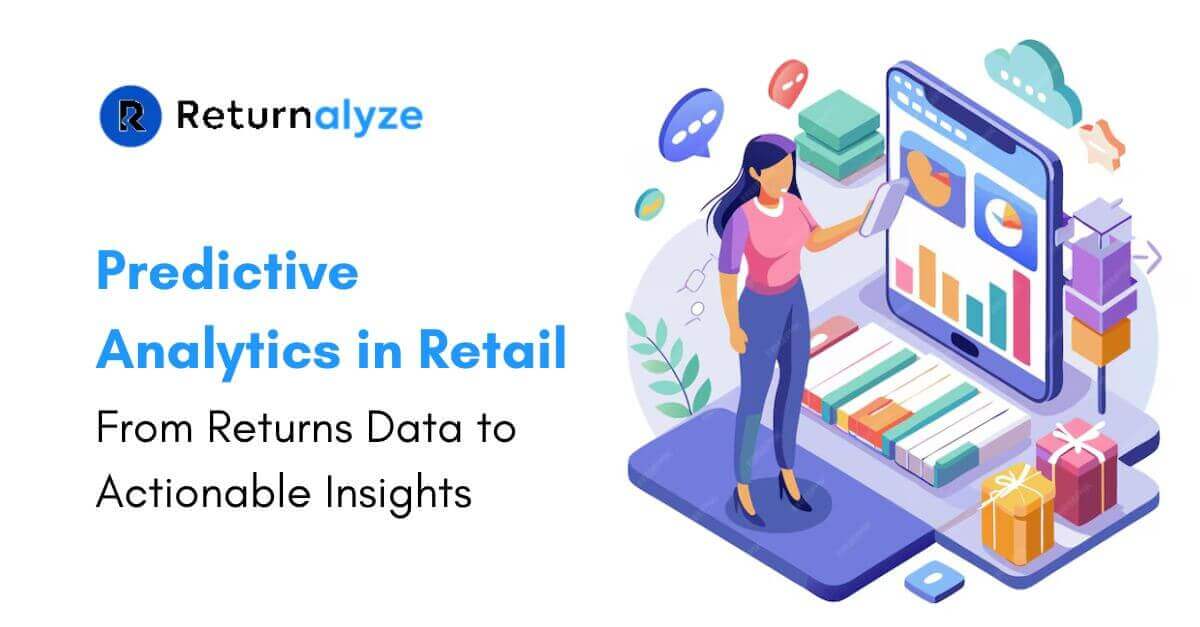


Unlock the power of predictive analytics to turn ecommerce returns data into actionable insights.
In today’s competitive retail environment, returns analytics has become an indispensable tool. This technique leverages historical data, sophisticated algorithms, and machine learning to forecast future results. By analyzing patterns and trends within returns data, retailers can gain actionable insights that drive strategic decision-making and enhance overall performance.
Leverage predictive analytics to transform returns data into actionable insights, enhancing product quality, optimizing inventory, and improving customer satisfaction in retail.
Returns data is a treasure trove of information for ecommerce return management. When customers return products, they provide valuable feedback about product quality, sizing issues, customer expectations, and more. By meticulously examining this data, retailers can uncover hidden trends and patterns that can inform future business strategies.
Understanding why products are returned is crucial for effective ecommerce returns management. Some common reasons include:
By identifying these patterns, retailers can take preemptive measures to reduce return rates, such as improving product descriptions, enhancing quality control, or optimizing shipping processes.
Segmenting returns data can provide deeper insights into returns logistics. Retailers can categorize returns based on various factors such as product type, customer demographics, purchase channel, and return frequency. This segmentation helps in pinpointing specific areas for improvement and tailoring strategies accordingly.
Clear and accurate product descriptions are vital in setting the right customer expectations. By analyzing returns data, retailers can identify discrepancies between product descriptions and actual products. Enhancing descriptions and providing high-quality images can reduce return rates and improve customer satisfaction.
Returns due to quality issues can significantly impact a retailer’s reputation and profitability. Returns analytics can help identify recurring quality issues, enabling retailers to address these problems proactively. By working closely with suppliers and manufacturers, retailers can ensure that products meet the desired quality standards before they reach customers.
Predictive analytics can also aid in ecommerce returns management and inventory management. By forecasting return rates for specific products, retailers can adjust their inventory levels accordingly. This helps in maintaining optimal stock levels, reducing excess inventory, and minimizing losses due to overstocking or stockouts.
Returns data can reveal valuable insights into customer preferences and behaviors. Retailers can leverage data to personalize the online shopping experience. For instance, if a customer frequently returns products due to sizing issues, the retailer can offer personalized size recommendations based on the customer’s past purchases.
To begin using predictive analytics, the initial task is to gather and combine data from multiple sources. This includes sales data, returns data, customer feedback, and any other relevant information. Retailers need robust data management systems to ensure the accuracy and consistency of the collected data.
Several tools and technologies are available for data analytics. Retailers should choose solutions that align with their specific needs and capabilities. Popular options include return management platforms, machine learning platforms, data visualization tools, and predictive modeling software.
Building accurate predictive models requires a combination of data science expertise and domain knowledge. Retailers should collaborate with data scientists to develop models that can accurately forecast return rates and identify actionable insights. These models should be continuously refined and updated based on new data and evolving business needs.
Once predictive models are developed, retailers need to implement them within their business processes. This includes integrating the models with existing systems, training staff on their usage, and establishing monitoring mechanisms to track performance and outcomes. Regular monitoring and evaluation help in fine-tuning the models and ensuring their effectiveness.
As technology continues to evolve, the potential of predictive analytics in retail will only grow. Advanced machine learning algorithms, real-time data processing, and increased integration of Internet of Things (IoT) devices will enable retailers to gain even deeper insights into customer behavior and preferences. Furthermore, leveraging an ecommerce returns management platform and advanced analytics will be crucial for retailers looking to maintain a competitive edge in the evolving retail landscape.
